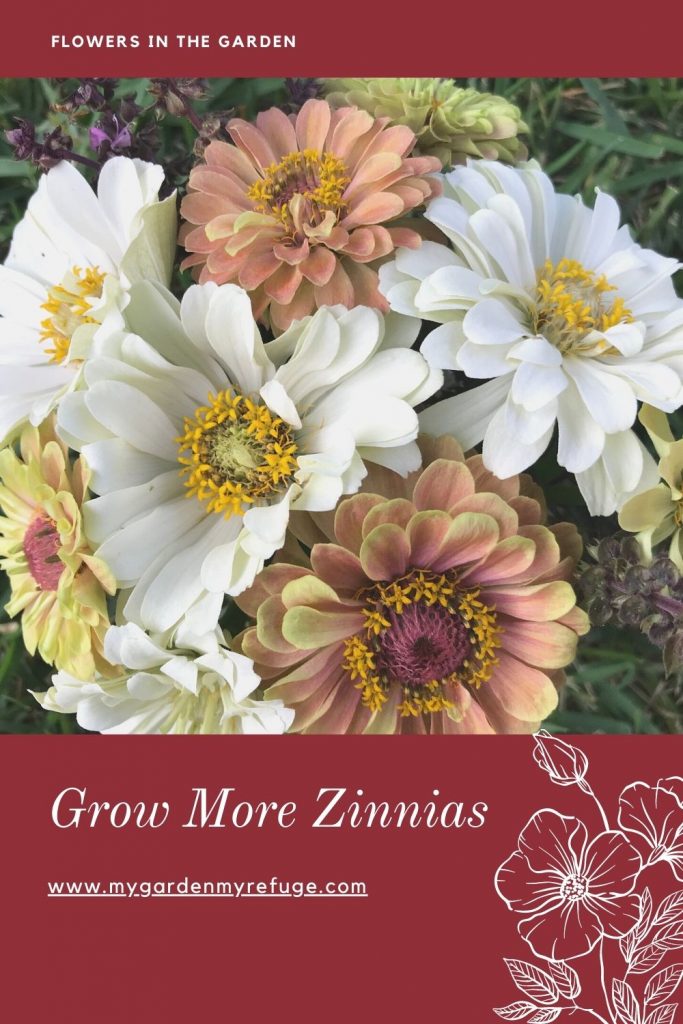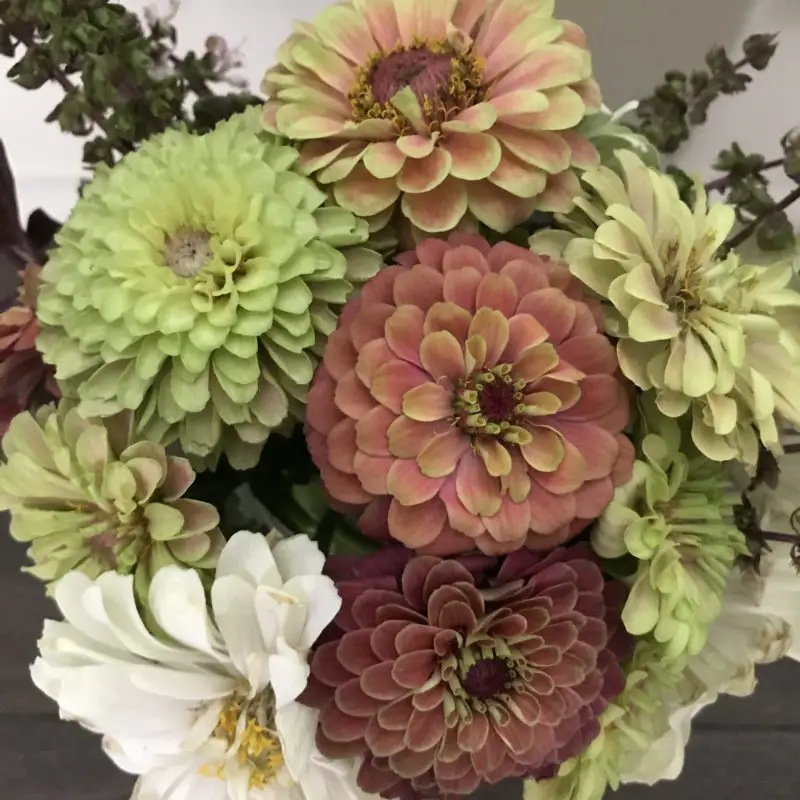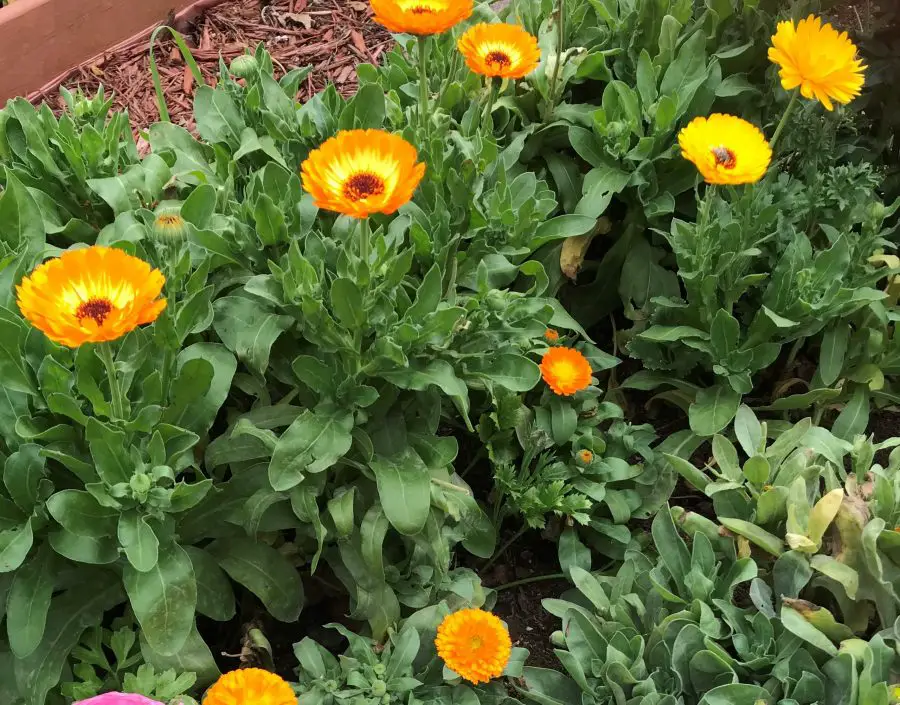If you tried growing Dahlias in central Texas, you must have relized they are a pain. Although Dahlias need warm winter to survive, they do not enjoy constant high heat. Fortunately, there is an excellent alternative option, which is zinnias. The latter is the little cousin of Dahlias and requires minimal attention, and with the varieties offered today, there is something for everyone. So would you reconsider and consider zinnia as the new dahlia for your Texas garden?
The history of the zinnia flower
Zinnia flowers originated in Latin America. They were brought to Europe by the Spaniards in the 16th century, but they were not cultivated until the late 1700s. When the first zinnia seed was introduced to the public, only French people were interested in it. They bred it and developed stable double flowers, which the rest of Europe grew fond of. In the 1860s, zinnias made their way back to North America, where it was gaining popularity.
Later, dwarf zinnia was brought from Mexico and made its way through to the seed house, where it was made available to gardeners.
If you are interested in learning more about the history of Zinnia, you can find it here.
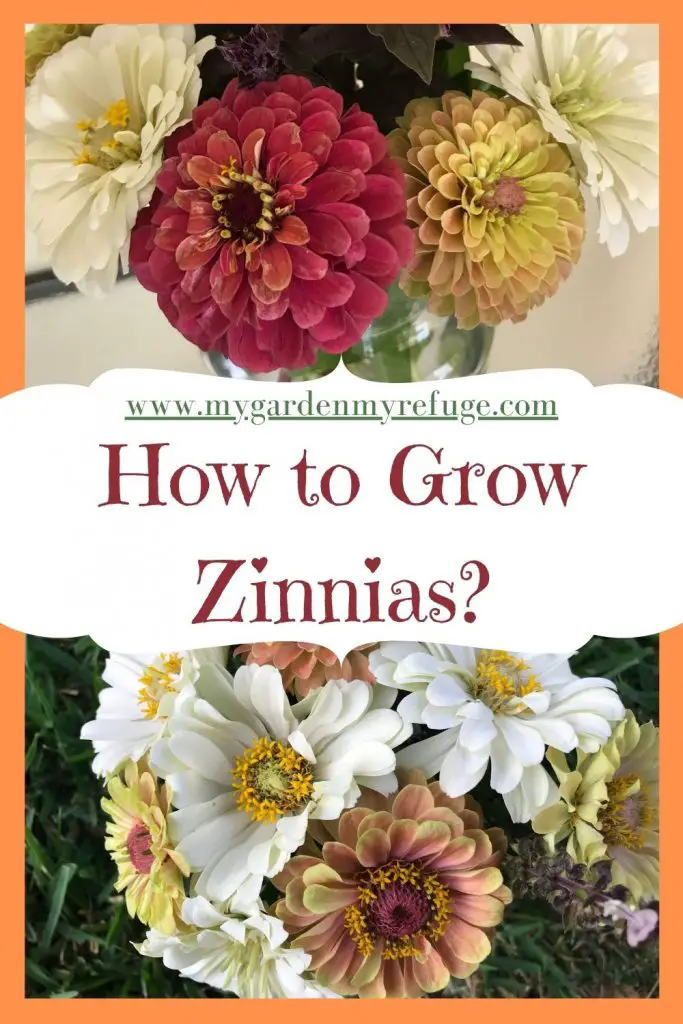
Growing Zinnias in Texas
Zinnia is an annual flower that grows in the warm season. They are heat-loving and drought-tolerant, making them great for a Texas garden. They grow from Spring till the first, killing frost. The original plant does not return, but it reseeds itself easily. The blooms come in three forms: single, semi-double, and double.
The single-blooming zinnia is very similar to a daisy. It holds one row of petals. The double-blooming one contains many rows of petals and can be pretty big, reminding us of its cousin, the dahlia. The semi-double variety is in between but is the most popular.
There is another differentiating criterion, and that is the growth habit of the plant. Some varieties grow as tall as five feet. They are excellent for a backdrop or cut flowers. Other zinnia varieties are short or dwarf, making them great for flower bed borders.
How to grow zinnia
Growing zinnia from seed vs. transplants
The best and easiest way to grow zinnias is by directly sowing the seeds. They do not need to be started indoors. Just make sure to do it after your last frost date.
The other benefit of growing Zinnias from seeds is that you can access unique selections. You will also have a full bed of them using only one packet which does not cost much.
Choose the right site.
Zinnias prefer full sun but can take some afternoon shade in Texas. The soil has to be well-draining and slightly loose. You may add some well-rotted compost to improve the texture and drainage of any soil type. Otherwise, they do not need a rich soil.
How to sow zinnia seeds?
There is nothing easier than growing zinnias. First, scatter the seeds sparingly in the chosen area, then lightly cover them with soil to prevent birds from eating them. You can also protect them with a mesh cover until they sprout.
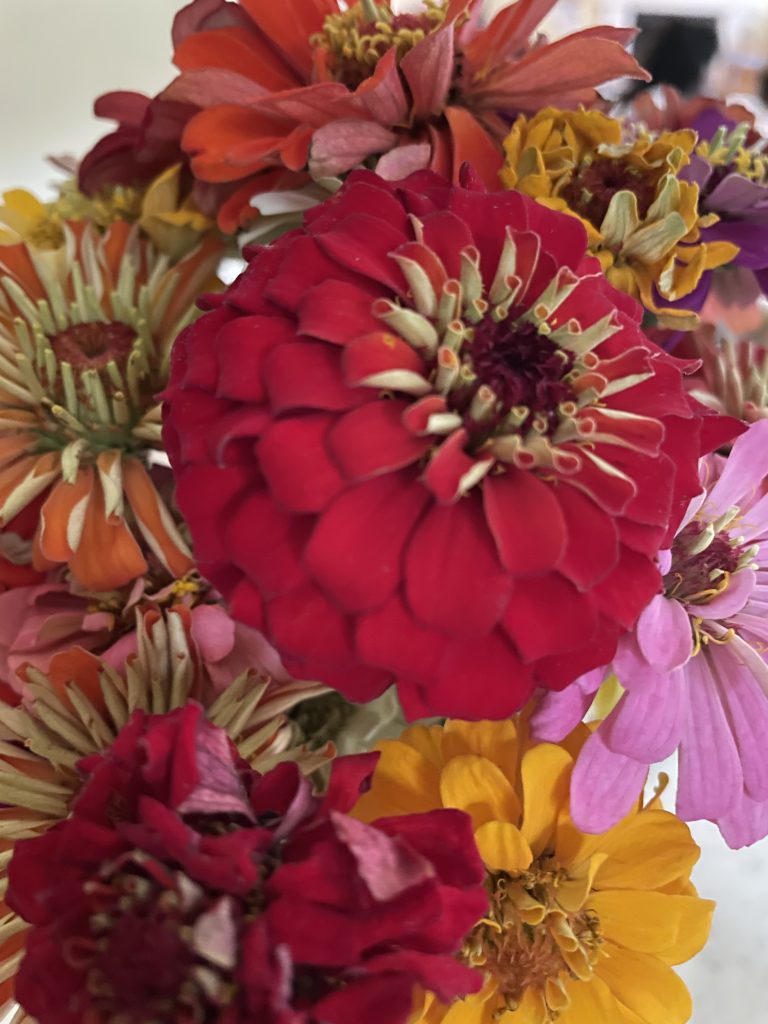
How far to space your zinnias?
Following the scattering method allows us to imitate nature and create clusters of plants. S me gardening experts recommend 4 to 12 inches apart, but I do not really follow that rule. Naturally, only the strong seedling will make it and grow strong.
How to water zinnia?
As we mentioned before, zinnias are heat-loving and drought-tolerant. Water lightly in the beginning, to keep the soil moist for the seeds to germinate. Once the plant is fully grown, it can take some dry time, but not too long. Water again whenever you notice the plant looking droopy in the morning.
Fertilizing Zinnias
Preparing the soil, in the beginning, is very important. Having live soil, rich in microorganisms, will be enough to feed the plants growing in it. For that matter, zinnias may not need extra feeding if the soil is rich. Otherwise, a supplemental feed with fish emulsion or seaweed won’t hurt.
Pinching
Flower farmers and growers recommend pinching the Zinnia plant at the third set of true leaves. This will promote bushier and sturdier growth.
Deadheading Zinnias
If you are growing the tall varieties, harvest the bloom frequently and make flower arrangements. If you are growing the dwarf varieties, remove spent blooms. It will ensure continuous bloom time through the season and a neat-looking plant.
Harvesting Zinnia flowers
Zinnias make wonderful lasting flower arrangements. The key is to harvest them at the right time. Here are some tips on how to harvest the flower:
- Once you decide on the flower you want to cut, hold it by the stem two inches away from the flower head. Shake it and notice if the stem is wobbly and swaying, the flower is not ready. If the stem is firm, then it is ready.
- If the neck of the flower is pinched or broken, the flower won’t last in the vase.
- Zinnia flowers last longer in the vase if you change the water frequently.
Does the Zinnia plant have any problems?
The main problem you can face while growing zinnias is mildew. It is a fungal disease that manifests as whitish spots on the leaves. It mainly occurs when the weather is hot and humid. Luckily, the plant recovers once the favorable elements disappear.
To keep zinnia plants healthy, prevent the spread of the disease by removing the affected part immediately. Discard them away from the garden to stop the spread of the spores.
If the problem persists, spray the plant with an organic fungicide or a homemade solution.
How to propagate zinnia?
There are two ways of propagating zinnias, and that is by saving seeds or rooting cuttings.
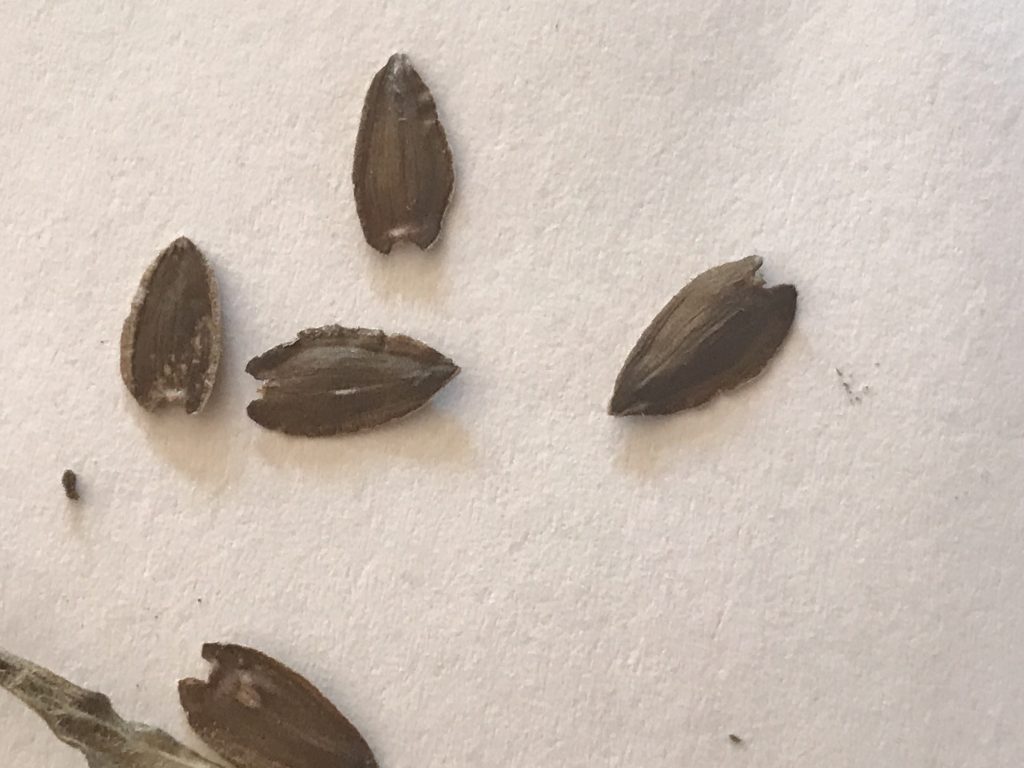
How to save zinnia seeds?
- Zinnia seeds have an arrow-like shape. They are attached to the base of the petals and in between the folds. Usually, the most viable seeds are found at the base of the dried flower.
- To save zinnia seeds, allow the flower to mature and dry completely.
- Using your thumbs, press and push away to allow the seeds to fall off.
- You can pinch out the ones attached to the petals.
- Save the seed in a paper bag or glass jar, away from humidity.
How to root zinnia cuttings?
Although, I find this method not worth the effort since using seed is much easier. Rooting cutting may take weeks.
- Take nice healthy cuttings from a plant.
- Make sure to have one to two nodes (where new growth appears)
- Remove the leaves except for the top ones.
- Dip the bottom of the stem in rooting hormone (optional)
- Insert it carefully into a container filled with moist soil.
- Maintain even moisture until new growth appears.
- Tug the stem gently to feel any resistance. If there is resistance, that means the roots are forming.
Are zinnia flowers suitable for drying?
Zinnias do not look good after drying unless you use silica beads.
- Fill up a container with silica beads halfway.
- Place the flower face down.
- Cover them with more silica.
- Follow the directions on the package as to how long you should wait.
